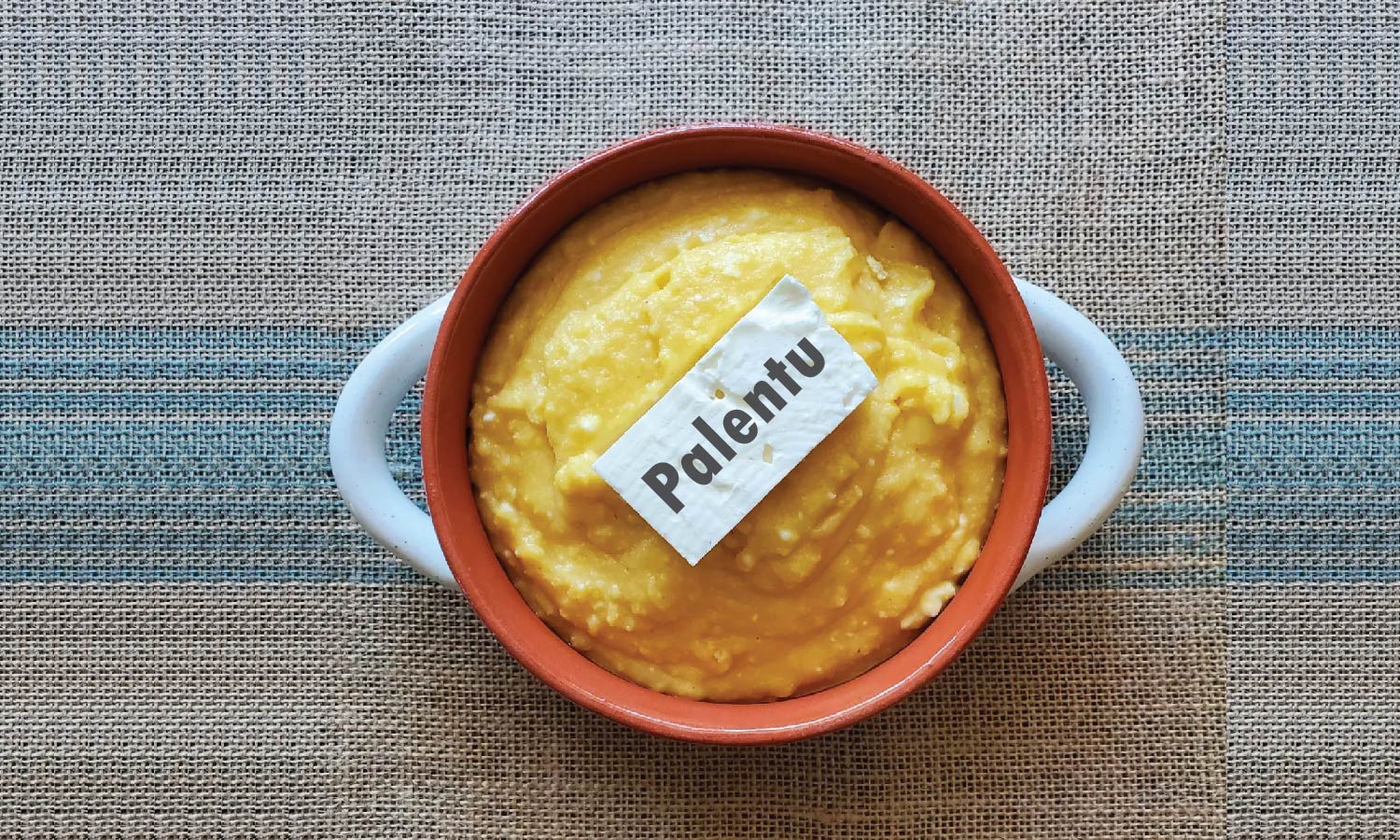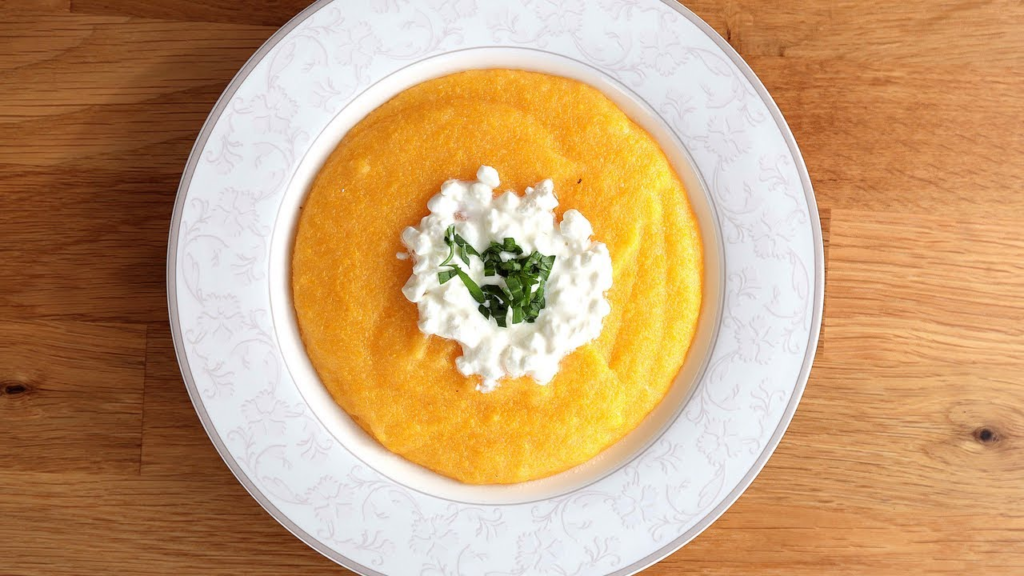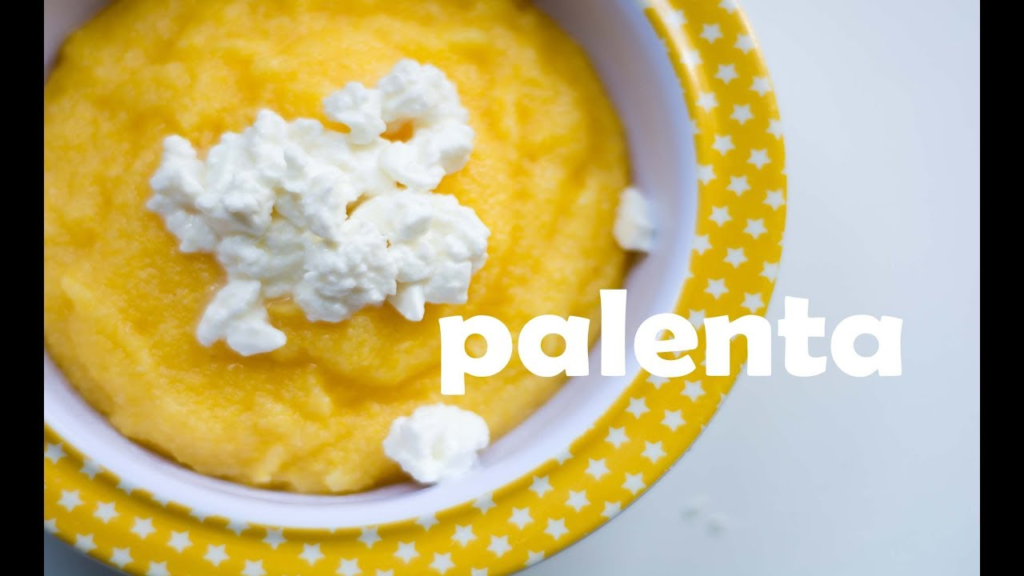Food
Palentu: Your Easy Guide to This Italian Staple

- Share
- Tweet /home/u433845138/domains/newsmm.co.uk/public_html/wp-content/plugins/mvp-social-buttons/mvp-social-buttons.php on line 71
https://newsmm.co.uk/wp-content/uploads/2025/07/WhatsApp-Image-2025-06-24-at-16.23.33_0690d5c8-01-01-01-01-01-01-01-01-01-1000x600.jpg&description=Palentu: Your Easy Guide to This Italian Staple', 'pinterestShare', 'width=750,height=350'); return false;" title="Pin This Post">
This isn’t just about a simple porridge; it’s about a dish that has sustained generations, adapted to various palates, and transformed from humble origins into a celebrated culinary canvas. Whether you’re a seasoned chef or a curious home cook, understanding “palentu” opens up a world of delicious possibilities. So, grab your whisk, and let’s embark on a journey to explore everything there is to know about this remarkable cornmeal creation.
A Brief History of Palentu
The story of polenta is deeply rooted in the agricultural history of Italy, particularly in its northern regions. Before the introduction of corn (maize) to Europe from the Americas in the 16th century, “polenta” was a broader term referring to any dish made from boiled, ground grains. Ancient Romans, for instance, consumed a similar porridge called “puls,” made from farro, millet, or chickpeas.
When corn arrived, it found fertile ground and quickly became a staple crop, especially in the Po Valley. It was inexpensive, easy to grow, and provided a substantial source of energy for the working class. Cornmeal soon replaced other grains in the traditional porridge, and what we now recognize as polenta became a cornerstone of the diet for peasants and farmers. It was a dish of survival and sustenance, often eaten daily, providing much-needed calories for arduous labor.
Over centuries, polenta evolved from a humble peasant food to a dish appreciated across all social strata. Regional variations emerged, and with the rise of modern agriculture and culinary innovation, polenta began to appear on more refined tables. Today, it’s not just a symbol of Italian culinary heritage but also a versatile ingredient embraced by chefs worldwide, showcasing its adaptability from simple comforting meals to gourmet presentations.
Nutritional Information

Polenta, being primarily made from cornmeal, is a good source of complex carbohydrates, providing sustained energy. While specific nutritional values can vary slightly depending on the type of cornmeal and any added ingredients (like butter or cheese), a general overview of a serving of cooked polenta (without additions) typically includes:
- Calories: Moderate, making it a good energy source.
- Carbohydrates: High, primarily complex carbohydrates, which are broken down slowly by the body, providing sustained energy.
- Protein: Low to moderate, depending on the cornmeal variety.
- Fat: Very low, unless butter, oil, or cheese are added during cooking or serving.
- Fiber: Moderate, especially in coarser ground varieties, aiding in digestion and promoting fullness.
- Vitamins and Minerals: Contains some essential nutrients, including B vitamins (particularly niacin, thiamine, and B6), iron, magnesium, phosphorus, and zinc. Many commercially available cornmeals are enriched with additional vitamins and minerals.
It’s also naturally gluten-free, making it an excellent option for individuals with celiac disease or gluten sensitivity. When preparing polenta, consider enhancing its nutritional profile by pairing it with protein-rich ingredients like lean meats, beans, or cheese, and plenty of vegetables.
Types of Polenta
Understanding the different types of cornmeal available is key to achieving your desired polenta texture and consistency. Each grind offers a unique experience:
Coarse-Ground Polenta
This is the most traditional form, yielding a rustic, hearty texture. Coarse-ground cornmeal retains more of the corn kernel’s integrity, resulting in a polenta that feels substantial and has a pleasant chew. It requires a longer cooking time and more stirring compared to finer grinds, but the rich, authentic flavor and satisfying mouthfeel are well worth the effort. It’s ideal for a robust side dish or a firm, sliceable polenta that can be grilled or fried.
Medium-Ground Polenta
A versatile all-rounder, medium-ground cornmeal strikes a balance between the rustic charm of coarse polenta and the smooth creaminess of fine polenta. It cooks more quickly than coarse varieties but still offers a good textural presence. This type is excellent for everyday use, producing a creamy yet slightly textured polenta that can be served soft or allowed to firm up.
Fine-Ground Polenta
Also known as “instant” or “quick-cooking” polenta (though not truly “instant” in the way pre-cooked polenta is), fine-ground cornmeal produces a very smooth, almost velvety polenta. Its fine particles absorb liquid quickly, significantly reducing cooking time. This type is perfect when you desire a delicate, creamy consistency, perhaps for a refined accompaniment to a sauce or a base for a more elegant dish.
Instant Polenta
This is a convenience product where the cornmeal has been pre-cooked and dried. Instant polenta requires minimal cooking time – often just a few minutes of stirring in hot liquid – making it an ideal choice for busy weeknights or when you need polenta in a hurry. While it sacrifices some of the deep flavor and texture development of slower-cooked varieties, it’s a fantastic option for quick meals.
Pre-Cooked Polenta
Sold in tubes or blocks, pre-cooked polenta is ready to slice and use. It has already been cooked and solidified, meaning you can simply cut it into desired shapes and then grill, fry, bake, or sauté it. This is the ultimate convenience product for those who love the firm texture of polenta without any cooking from scratch. It’s perfect for quick appetizers or as a base for hearty main courses.
Mastering the Art of Cooking Palentu: A Step-by-Step Guide
Cooking polenta, or “palentu,” is often perceived as daunting due to the constant stirring it traditionally requires. However, with the right technique and a little patience, you can achieve a perfectly creamy and delicious result every time.
Ingredients and Equipment

Ingredients:
- 1 cup (about 160-180g) cornmeal (choose your preferred grind: coarse, medium, or fine)
- 4-5 cups (about 1-1.2 liters) liquid (water, vegetable broth, chicken broth, or milk for a richer taste)
- 1 teaspoon salt (or to taste)
- 1-2 tablespoons unsalted butter (optional, for creaminess)
- 1/4 – 1/2 cup grated Parmesan cheese (optional, for flavor)
Equipment:
- Heavy-bottomed saucepan or pot (to prevent sticking and ensure even heat distribution)
- Whisk (for initial mixing to prevent lumps)
- Wooden spoon or spatula (for stirring during cooking)
Basic Palentu Recipe (Stovetop Method)
This is the classic approach and yields the most traditional results.
- Prepare Your Liquid: In your heavy-bottomed saucepan, bring the liquid (water, broth, or milk) to a rolling boil. Add the salt.
- Add Cornmeal Gradually: This is the most crucial step for preventing lumps. Reduce the heat to low. While continuously whisking the hot liquid, slowly drizzle in the cornmeal in a thin, steady stream. Keep whisking vigorously for about 1-2 minutes until all the cornmeal is incorporated and no lumps remain.
- Simmer and Stir: Once the cornmeal is fully incorporated, switch from the whisk to a wooden spoon or a sturdy spatula. Continue to stir the polenta frequently. For coarse-ground cornmeal, this can take 45-60 minutes. For medium-ground, 25-40 minutes. For fine-ground, 15-25 minutes. Instant polenta will be ready in 5-10 minutes.
- The “Stirring” Debate: Traditionalists advocate for almost constant stirring to prevent sticking and ensure creaminess. However, with a good heavy-bottomed pot and low heat, you can stir less frequently (every few minutes), especially as it thickens. Just ensure the bottom isn’t sticking.
- Check for Doneness: The polenta is done when it pulls away from the sides of the pot, forms a thick, creamy consistency, and has lost its raw, grainy taste. Taste a small amount – it should be tender and smooth.
- Finish (Optional): Remove from heat. Stir in butter and grated Parmesan cheese until melted and fully incorporated. This adds richness and flavor.
- Serve Immediately: Polenta is best served hot and fresh. It will thicken considerably as it cools.
Alternative Cooking Methods
While the stovetop method is classic, other techniques can offer convenience or slightly different textures.
Oven-Baked Polenta
This method is largely hands-off, minimizing stirring.
- Preheat oven to 350°F (175°C).
- Bring liquid and salt to a boil on the stovetop in an oven-safe pot (Dutch oven works well).
- Whisk in cornmeal as described above. Stir vigorously for 2-3 minutes.
- Cover the pot tightly and transfer to the preheated oven.
- Bake for 45-60 minutes for medium or coarse-ground polenta, stirring once halfway through. Fine-ground will take less time.
- Remove from oven, stir in butter and cheese if desired, and serve.
Slow Cooker Polenta
Ideal for a “set it and forget it” approach, perfect for entertaining.
- Grease the slow cooker insert.
- Combine hot liquid, salt, and cornmeal in the slow cooker. Whisk well to combine and prevent lumps.
- Cook on low for 2-4 hours, or on high for 1-2 hours, stirring occasionally (every 30-60 minutes) to prevent sticking and ensure even cooking. The longer it cooks on low, the creamier it often becomes.
- Stir in butter and cheese before serving.
Pressure Cooker Polenta
The fastest method for perfect polenta.
- Combine liquid, salt, and cornmeal in the pressure cooker pot. Whisk thoroughly.
- Lock the lid and set to high pressure.
- Cook for 8-10 minutes for coarse or medium-ground cornmeal, or 5-7 minutes for fine-ground.
- Allow natural pressure release for 10 minutes, then quick release any remaining pressure.
- Carefully open the lid. Stir well. It may look liquidy at first but will thicken as you stir.
- Stir in butter and cheese, if using, and serve.
Creative Culinary Uses of Palentu
The beauty of “palentu” lies in its incredible versatility. It can be a humble side dish, a hearty main course, or even a delightful dessert. Its mild flavor acts as a perfect canvas for a myriad of ingredients.
Soft and Creamy Palentu Pairings
When served immediately after cooking, polenta is wonderfully soft and creamy, making it an ideal base for rich sauces and stews.
- Classic Ragu: The quintessential pairing. A slow-cooked meat ragu (like Bolognese or short rib ragu) spooned over creamy polenta is a match made in culinary heaven, allowing the polenta to soak up all the flavorful juices.
- Mushroom Medley: Sautéed wild mushrooms with garlic, herbs, and a splash of white wine, piled high on polenta, create a sophisticated vegetarian meal.
- Balsamic Glazed Vegetables: Roasted or grilled vegetables (like bell peppers, zucchini, or eggplant) drizzled with a sweet and tangy balsamic glaze provide a vibrant contrast to the mild polenta.
- Braised Meats: Hearty braised dishes such as osso buco, coq au vin, or tender pot roasts are wonderfully complemented by creamy polenta, which soaks up the rich gravy.
- Cheesy Variations: Stir in different cheeses like Gorgonzola, fontina, or provolone for a rich, flavorful twist. Truffle oil can also elevate cheesy polenta to gourmet status.
- Fried Eggs and Greens: For a comforting breakfast or brunch, top creamy polenta with a perfectly fried egg and some sautéed spinach or kale.
Firm Polenta Creations
When cooled, polenta solidifies into a firm, sliceable block, opening up a whole new world of culinary possibilities.
- Grilled or Fried Polenta: Slice cooled polenta into squares, rectangles, or triangles. Brush with olive oil and grill until golden brown and slightly crispy, or pan-fry in a little oil or butter. These can be served as appetizers or a side.
- Polenta Fries: Cut firm polenta into fry-like sticks. Toss with olive oil, salt, pepper, and your favorite herbs, then bake until crispy. Serve with dipping sauces like marinara or a spicy aioli.
- Polenta Pizzas: Use slices of firm polenta as a gluten-free “crust.” Top with tomato sauce, mozzarella, and your favorite pizza toppings, then bake until the cheese is bubbly and melted.
- Layered Bakes: Create savory gratins by layering slices of polenta with cheese, vegetables, and sauces, then baking until bubbling and golden. Think of it as a polenta lasagna.
- Croutons: Cube cooled polenta and toast or fry until crispy. Use them as croutons in salads or to add texture to soups.
Sweet Palentu Dishes
While often savory, polenta can surprisingly adapt to sweet applications, especially with fine-ground cornmeal.
- Polenta Cake: A popular Italian dessert, polenta cake (torta di polenta) is typically dense and moist, often flavored with citrus zest, almonds, or dried fruits. It’s an unexpectedly delicious treat.
- Breakfast Porridge: Cook polenta with milk instead of water, and sweeten it with honey, maple syrup, or sugar. Top with fresh berries, nuts, or a drizzle of cream for a hearty breakfast.
- Fruit Compote: Serve creamy polenta with a warm berry compote or stewed apples for a comforting dessert or breakfast.
Palentu Around the World
While its roots are firmly in Italy, variations of cornmeal porridge are found in cuisines across the globe, showcasing the universal appeal of this simple yet satisfying food.
- Romania (Mămăligă): Perhaps the most well-known cousin of Italian polenta, mămăligă is a staple in Romanian cuisine. It’s often served with sour cream, cheese (telemea), or alongside stews and grilled meats. It can be soft or firm, cut into slices, or even baked.
- Slovenia, Croatia, Serbia, Bosnia (Žganci / Kačamak / Palenta): In the Balkan region, cornmeal porridge goes by various names like žganci or kačamak, and “palenta” in Croatia, indicating its Italian influence. It’s a common side dish, often enjoyed with milk, yogurt, or cracklings.
- Africa (Ugali / Sadza / Pap / Fufu): Throughout sub-Saharan Africa, a stiff cornmeal porridge is a primary staple. Known by names such as ugali (East Africa), sadza (Zimbabwe), pap (South Africa), or fufu (West Africa, though fufu can also be made from other starches), it serves as the main carbohydrate, often eaten with hands and used to scoop up stews and relishes.
- United States (Grits): In the Southern United States, grits are a beloved breakfast and side dish. Made from hominy (corn kernels treated with an alkali process), grits are usually cooked to a creamy consistency and can be savory (with cheese, shrimp, or bacon) or sweet.
- Mexico (Atole): While not a porridge, atole is a warm, thick beverage made from masa (corn dough), often flavored with cinnamon, vanilla, or chocolate. It highlights corn’s versatility in creating comforting foods.
- Brazil (Angu): In Brazil, angu is a simple cornmeal porridge, often served as a side dish to meat and bean stews. It can be soft and creamy or firm.
These diverse iterations highlight how a basic ingredient like cornmeal can be transformed into fundamental dishes that nourish and define culinary identities across continents.
Troubleshooting Common Palentu Problems
Even with a simple dish like polenta, a few common issues can arise. Here’s how to troubleshoot them:
- Lumpy Polenta: This is the most frequent complaint. It occurs when cornmeal is added too quickly or without sufficient whisking.
- Solution: Always drizzle cornmeal very slowly into boiling liquid while whisking vigorously. If lumps still form, try to break them up with the whisk. For stubborn lumps, you can pass the cooked polenta through a fine-mesh sieve, though this is a last resort.
- Sticking to the Pot: This happens if the heat is too high or if stirring is insufficient, especially with thin-bottomed pots.
- Solution: Use a heavy-bottomed pot. Cook on low heat. Stir frequently, especially during the initial thickening phase. If it starts to stick, scrape the bottom thoroughly and reduce heat further.
- Grainy or Gritty Texture: This indicates that the polenta hasn’t cooked long enough.
- Solution: Continue cooking, adding a little more hot liquid if it becomes too thick. The cornmeal needs time to fully hydrate and soften. Taste test to ensure it’s tender and not gritty.
- Too Thick or Too Thin: The liquid-to-cornmeal ratio or cooking time can affect consistency.
- Solution: If too thick, whisk in a little more hot liquid (water, broth, or milk) until you reach your desired consistency. If too thin, continue to cook and stir until it thickens, or add a very small amount of extra cornmeal mixed with cold water to form a slurry, then stir it into the hot polenta and cook for a few more minutes.
- Bland Flavor: Polenta on its own is quite neutral.
- Solution: Don’t skimp on salt in the cooking liquid. Finishing with butter and Parmesan cheese significantly enhances flavor. Consider cooking with broth instead of water. Add aromatic herbs like rosemary or thyme during cooking, or a bay leaf.
- Splattering: As polenta thickens, it can bubble and splatter.
- Solution: Use a deep pot. Reduce the heat to a gentle simmer. A splatter screen can be helpful, or simply stand back slightly while stirring.
By being aware of these common pitfalls and their solutions, you can confidently achieve perfectly smooth, creamy, and flavorful “palentu” every time.
Health Benefits of Including Palentu in Your Diet
Beyond its comforting appeal, polenta offers several health benefits that make it a valuable addition to a balanced diet:
- Excellent Source of Energy: As a complex carbohydrate, polenta provides a steady and sustained release of energy, making it an ideal food for active individuals or as a foundation for a meal that keeps you full longer.
- Naturally Gluten-Free: This is a significant benefit for individuals with celiac disease or non-celiac gluten sensitivity, offering a safe and versatile grain alternative.
- Good Source of Fiber: Especially in less refined or coarser grinds, polenta contains dietary fiber, which is crucial for digestive health, promoting regularity, and helping to maintain a healthy gut microbiome. Fiber also contributes to feelings of fullness, aiding in weight management.
- Provides Essential Nutrients: Polenta contains a range of B vitamins (including niacin, thiamine, and B6), which are vital for energy metabolism, nerve function, and overall cellular health. It also provides minerals like iron (important for oxygen transport), magnesium (involved in muscle and nerve function), phosphorus (for bone health), and zinc (for immune function).
- Low in Fat (Naturally): When prepared without excessive amounts of butter, oil, or cheese, polenta is naturally very low in fat, making it a heart-healthy choice.
- Versatile for Nutrient Boosting: Its mild flavor makes it easy to pair with nutrient-dense ingredients. Serve it with lean proteins, an abundance of vegetables, and healthy fats to create a truly balanced and nutritious meal. For example, adding leafy greens, legumes, or lean meats can significantly boost its vitamin, mineral, and protein content.
- Digestibility: For many, cornmeal is easily digestible, making polenta a gentle option for sensitive stomachs.
Storing and Reheating Palentu
Knowing how to properly store and reheat polenta ensures that you can enjoy its deliciousness beyond the initial serving.
Storing Cooked Palenta
- Soft Polenta: If you have leftover creamy polenta, it will thicken considerably as it cools. To store, transfer it to an airtight container. It can be refrigerated for 3-4 days.
- Firm Polenta: If you’ve poured your cooked polenta into a pan to solidify, once cooled and firm, you can slice it and store the slices in an airtight container in the refrigerator for up to 5-7 days. You can also wrap individual slices in plastic wrap before placing them in a container to prevent sticking.
- Freezing: Both soft and firm polenta can be frozen.
- Soft Polenta: Cool completely, then transfer to freezer-safe bags or containers. It can be frozen for up to 2-3 months.
- Firm Polenta: Slice the cooled polenta, place parchment paper between slices to prevent sticking, and then transfer to a freezer-safe bag or container. Freeze for up to 3 months.
Reheating Polenta
- Soft Polenta:
- Stovetop: The best method. Place the leftover polenta in a saucepan. Add a splash of liquid (water, milk, or broth) – about 1/4 to 1/2 cup per 2 cups of polenta, or more if needed. Heat over low to medium-low heat, stirring frequently with a whisk or wooden spoon, until it becomes creamy and heated through. Add more liquid as needed to achieve desired consistency.
- Microwave: For individual servings, place polenta in a microwave-safe bowl. Add a tablespoon or two of liquid. Heat on medium power, stirring every 30-60 seconds, until hot and creamy. Be careful not to overheat, as it can dry out.
- Firm Polenta:
- Pan-Frying/Grilling: This is the most common and delicious way to reheat firm polenta. Heat a little olive oil or butter in a skillet over medium heat. Add slices of polenta and cook for 3-5 minutes per side, or until golden brown and crispy. If grilling, brush with oil and grill until marked and heated through.
- Baking: Place slices of polenta on a baking sheet. Bake in a preheated oven at 375°F (190°C) for 10-15 minutes, or until heated through and slightly crispy on the edges.
- Air Fryer: Place polenta slices in a single layer in the air fryer basket. Cook at 375°F (190°C) for 8-12 minutes, flipping halfway, until crispy and hot.
Frequently Asked Questions (FAQs)
- What’s the difference between “palentu” and polenta? “Palentu” is simply the Croatian word for polenta. They refer to the exact same dish made from boiled cornmeal.
- Is polenta gluten-free? Yes, pure cornmeal is naturally gluten-free, making polenta an excellent and safe option for those with celiac disease or gluten sensitivity. However, always check labels for potential cross-contamination in processed cornmeal products.
- How do I prevent my polenta from getting lumpy? The key is to add the cornmeal slowly in a thin, steady stream to boiling liquid while whisking vigorously. Continue whisking for the first minute or two until all cornmeal is fully incorporated and lumps are prevented.
- How long does polenta take to cook? Cooking time varies significantly by the grind of cornmeal. Fine-ground (quick-cooking) polenta can be ready in 5-15 minutes, medium-ground in 25-40 minutes, and coarse-ground can take 45-60 minutes or even longer for a truly tender result. Instant polenta takes only a few minutes.
- Can I make polenta without constant stirring? While traditionalists recommend constant stirring, you can get away with less frequent stirring (every few minutes) if you use a heavy-bottomed pot, keep the heat low, and scrape the bottom well. Oven-baked and slow cooker methods also significantly reduce stirring.
- What liquid should I use to cook polenta? You can use water, vegetable broth, chicken broth, or milk. Water creates a very neutral base, while broths add savory depth. Milk makes the polenta richer and creamier. A mix of water and milk is also common.
- What can I do with leftover firm polenta? Leftover firm polenta is incredibly versatile! You can slice it and pan-fry, grill, bake, or air fry it until crispy. It can be used as a base for mini-pizzas, made into “fries,” or layered in gratins.
- Is polenta healthy? Yes, polenta is a healthy source of complex carbohydrates, providing sustained energy. It’s naturally low in fat (before additions), gluten-free, and contains dietary fiber and essential minerals like iron, magnesium, and B vitamins. Its healthfulness increases when paired with nutrient-dense ingredients.
- Can I freeze cooked polenta? Absolutely! Both soft and firm polenta can be frozen. Cool completely, then store in airtight, freezer-safe containers or bags for up to 2-3 months. Reheat soft polenta with a splash of liquid, and reheat firm polenta by pan-frying, baking, or grilling.
- What are some classic pairings for creamy polenta? Creamy polenta pairs beautifully with rich, slow-cooked meat ragus, mushroom sauces, braised meats like osso buco, roasted vegetables, and a variety of cheeses. It’s a wonderful canvas for robust, flavorful toppings.
Click for more amazing info. News MM

-

 Celebrity8 months ago
Celebrity8 months agoIndia Rose Brittenham: All You Need to Know About Heather Thomas’ Daughter
-

 Celebrity8 months ago
Celebrity8 months agoMargot Rooker: All You Need to Know About Michael Rooker’s Wife
-

 Celebrity8 months ago
Celebrity8 months agoNadia Farmiga? All You Need to Know About Taissa Farmiga’s Sister
-

 Celebrity8 months ago
Celebrity8 months agoRobert Noah? All You Need to Know About Trevor Noah’s Father
-

 Celebrity7 months ago
Celebrity7 months agoJackie Witte? All You Need to Know About Paul Newman’s First Wife
-

 Celebrity8 months ago
Celebrity8 months agoCheryl Pistono? All You Need to Know About Kareem Abdul-Jabbar’s Ex-Girlfriend
-

 Celebrity8 months ago
Celebrity8 months agoAbigail S. Koppel? All You Need to Know About Leslie Wexner’s Wife
-

 Celebrity7 months ago
Celebrity7 months agoWho is the Father of Jay-Z? Biography of Adnis Reeves












